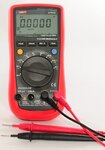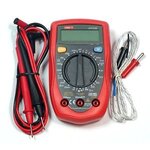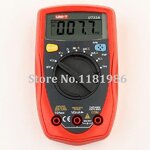easy electronics
Member level 3
what does digital voltmeter measure when we apply any kind of voltage at its input.
Suppose we apply sine wave .
does he measure rms value .
if rms then how .
When we apply random wave like triac based dimmer output then what do they measure.
When we apply square wave at its input then what do they measure.
Basicall i want to design a voltmeter using pic microcontroller which should behave same as Market available voltmeters .
like

Suppose we apply sine wave .
does he measure rms value .
if rms then how .
When we apply random wave like triac based dimmer output then what do they measure.
When we apply square wave at its input then what do they measure.
Basicall i want to design a voltmeter using pic microcontroller which should behave same as Market available voltmeters .
like


